Jalaluddin Haqqani
Founder of the Haqqani network (deceased)
Haqqani Network is a militant Islamist group operating in Afghanistan and Pakistan. The group is affiliated with the Afghan Taliban, though the group retains its own command structure.
December 11, 2024: An ISIS-K suicide bomber detonates an explosive outside of the office of Taliban refugee minister Khalil Haqqani in Kabul. The explosion kills Haqqani and six others. Haqqani is the highest-profile Taliban leader targeted by ISIS-K since the de facto regime came to power in August 2021.Simon Fraser and Caroline Davies, “Suicide bomb kills Taliban minister in Kabul,” BBC News, December 11, 2024, https://www.bbc.com/news/articles/cvg952q81x8ol; Ayaz Gul, “Funeral held for slain Afghan Taliban minister; IS-K claims credit for killing,” Voice of America, December 12,2024, https://www.voanews.com/a/funeral-held-for-slain-afghan-taliban-minister-is-k-claims-credit-for-killing/7898958.html,
The Haqqani network is a militant Islamist group operating in Afghanistan and Pakistan. It is considered a branch of the Afghan Taliban, but operates independently from the organization and has a more diffuse command structure.Eric Schmitt, “Taliban Fighters Appear Blunted in Afghanistan,” New York Times, December 26, 2010, http://www.nytimes.com/2010/12/27/world/asia/27policy.html?_r=0. It originated in the late 1970s but rose to prominence in the resistance to the Soviet occupation of Afghanistan in the 1980s. After the 1989 Soviet withdrawal from Afghanistan, Jalaluddin Haqqani formed an alliance with the Taliban and supported the growth of al-Qaeda. When the Taliban violently assumed de facto control of Afghanistan in 1996, the group appointed Haqqani as minister of tribal affairs.“Part 3: Through the eyes of the Taliban,” Asia Times Online, May 5, 2004, http://www.atimes.com/atimes/Central_Asia/FE05Ag02.html. Ever since, the Haqqani network has been subsumed under the larger Taliban, although the Haqqanis preserve distinct command and control.“The Haqqani Network,” Institute for the Study of War, accessed April 20, 2015, http://www.understandingwar.org/report/haqqani-network. In December 2018, three representatives of the Haqqani Network accompanied the Taliban delegation to the Pakistan-sponsored peace talks between the Taliban and United States held in the United Arab Emirates.Kathy Gannon, “Taliban say talks focused on US withdrawal from Afghanistan,” Associated Press, December 19, 2018, https://www.apnews.com/61121b245e9d4432b911df7004b6d4da.
Since the Taliban regime’s overthrow in 2001, the Haqqani network has been a lethal and sophisticated arm of the Afghan insurgency against the Western-backed government in Kabul. The Haqqani network’s base of operations is located near Miramshah, in North Waziristan, part of Pakistan’s Federally Administered Tribal Areas (FATA).Anand Gopal, “The Most Deadly US Foe in Afghanistan,” Christian Science Monitor, June 1, 2009, http://www.csmonitor.com/World/Asia-South-Central/2009/0601/p10s01-wosc.html. Although it has cooperated with and even praised al-Qaeda, the Haqqani network focus is regional, not global like al-Qaeda’s. Indeed, according to declassified U.S. intelligence, the Haqqanis enjoyed close ties with the United States from the time of anti-Soviet jihad in the 1980s until September 11, 2001.“Blacklisted,” Economist, September 15, 2012, http://www.economist.com/node/21562974.
Jalaluddin Haqqani and his Islamist fighters received considerable military assistance from the U.S. Central Intelligence Agency (CIA) during the anti-Soviet struggle.Jason Ukman, “The Haqqani Network: al Qaeda’s Dangerous Patron,” Washington Post, July 11, 2008, http://www.washingtonpost.com/blogs/checkpoint-washington/post/al-qaedas-dangerous-haqqani-patron-in-pakistan/2011/07/18/gIQAtWmcLI_blog.html. In July 2015, a senior member of the Haqqani network claimed that its founder, Jalaluddin Haqqani, had been dead for more than a year. Neither U.S. intelligence nor the Taliban confirmed his death.Matthew Rosenberg and Ihsanullah Tipu Mehsud, “Founder of Haqqani Network Is Long Dead, Aide Says,” New York Times, July 31, 2015, http://www.nytimes.com/2015/08/01/world/asia/founder-of-haqqani-network-died-nearly-a-year-ago-member-says.html. Pakistan’s Inter-Services Intelligence (ISI) agency has also given extensive support, including safe harbor and access to weapons, to the Haqqani network, enabling the group to expand. However, the Afghan government and coalition forces have inflicted great damage on the Haqqani network in recent years, bringing its total force size down from as many as 10,000 in 2011 to as few as 2,000 in 2012.“Mapping Militant Organizations,” Stanford University, last modified May 15, 2015, http://web.stanford.edu/group/mappingmilitants/cgi-bin/groups/view/363.
Since the network’s leader, Jalaluddin Haqqani, grew ill, his son Sirajuddin became the operational director of the organization, enhancing its cooperation with al-Qaeda and other violent Islamist groups in the region.Jason Ukman, “The Haqqani Network: al Qaeda’s Dangerous Patron,” Washington Post, July 11, 2008, http://www.washingtonpost.com/blogs/checkpoint-washington/post/al-qaedas-dangerous-haqqani-patron-in-pakistan/2011/07/18/gIQAtWmcLI_blog.html. The Taliban reported Jalaluddin Haqqani’s death in September 2018, but observers did not expect Haqqani’s death to have an impact on the group’s operations.Kathy Gannon, “Death of Afghan group’s founder unlikely to weaken militants,” Associated Press, September 4, 2018, https://www.apnews.com/be6aab352110497696ddc9a01f3bf693/Taliban:-Founder-of-Haqqani-network-dies-inside-Afghanistan?utm_campaign=SocialFlow&utm_medium=AP&utm_source=Twitter. The U.S. intelligence community regards the Haqqani network as the leading insurgency force in South Asia, with more intimate ties to Arab jihadist groups and Pakistani intelligence than any other faction.Anand Gopal, “The Most Deadly US Foe in Afghanistan,” Christian Science Monitor, June 1, 2009, http://www.csmonitor.com/World/Asia-South-Central/2009/0601/p10s01-wosc.html. In 2011, Admiral Mike Mullen, then-chairman of the U.S. Joint Chiefs of Staff, called the Haqqanis a “veritable arm” of the ISI.“Blacklisted,” Economist, September 15, 2012, http://www.economist.com/node/21562974.
The Haqqani network seeks to establish an Islamic state in Pakistan and Afghanistan and build a caliphate under Islamic law. Like the Taliban, the Haqqani network endorses an austere and radical interpretation of sharia (Islamic law), positing that Muslims must aspire to live in accordance with the actions of the Salaf, the first generation of Muslim leaders after the Prophet Muhammad.Michael Semple, Rhetoric, Ideology and Organizational Structure of the Taliban Movement, United States Institute of Peace, January 15, 2015, http://www.usip.org/publications/rhetoric-ideology-and-organizational-structure-of-the-taliban-movement.
The Haqqani network gained momentum during the Soviet occupation and came to play a central role in the Afghan mujahideen movement. Like the Taliban, they embrace a strict interpretation of Sunni Islam known as Deobandi.Ahmed Rashid, Taliban (New Haven, CT: Yale University Press, 2010), 88. This school of thought was a branch of Hanafi Islam that developed in the late nineteenth century in the madrassas (religious schools) of the Indian subcontinent.“Deobandis,” Oxford Islamic Studies Online, accessed May 1, 2015, http://www.oxfordislamicstudies.com/article/opr/t125/e522?_hi=1&_pos=2. What set the Deobandis apart was their habit of instructing youth in Islamic theology and little else. They strove to inculcate students with a fierce respect for piety. This rigorous instruction turned out pious Muslims who were able to recite the Quran and aimed to adhere as closely as possible to the lived experience of Islam’s prophet Muhammad as revealed in the Hadith (the sayings and actions of Muhammad). The Deobandis’ vision put faith at the center of life, drawing a stark distinction between the kuffar (unbelievers) and the ummah (community of believers).Ahmed Rashid, Taliban (New Haven, CT: Yale University Press, 2010), 88.
After seizing power in Kabul in 1996, the Taliban announced its aims to impose order and enforce sharia. All this was done to defend the special Islamic character of the “Emirate of Afghanistan.”Ahmed Rashid, Taliban (New Haven, CT: Yale University Press, 2010), 22. The Taliban banned most sporting events and forms of entertainment, from poetry and music to kites. They closed all-girls schools, and women were allowed in public only under strict male supervision. Even when women were in the home, the windows were painted black to prevent passersby from glimpsing women in their private quarters.Ahmed Rashid, Taliban (New Haven, CT: Yale University Press, 2010), 90.
In 2008, Jalaluddin Haqqani stated that “all the Mujahideen wage Jihad under the leadership of [Taliban leader Mullah Mohammed Omar] against the American invaders and their lackeys.”“The Haqqani Network,” Institute for the Study of War, accessed April 20, 2015, http://www.understandingwar.org/report/haqqani-network. In September 2012, Haqqani’s son Sirajuddin declared, “We are one of the fronts of the Islamic Emirate… and we are proud of our pledge to its Emir [Mullah Omar] and we carry out its orders and all its regulations… and we obey completely in good deeds the Emir of the Believers Mullah Muhammad Omar.”Bill Roggio, “Haqqani Network is part of the Taliban- Siraj Haqqani,” Long War Journal, October 5, 2012, http://www.longwarjournal.org/archives/2012/10/siraj_haqqani_denies.php. The Taliban even released a statement on its website stating that there is “no separate entity or network in Afghanistan by the name of Haqqani” and that Jalaluddin Haqqani is “a member of the Leadership Council of Islamic Emirate and is a close, loyal and trusted associate” of Mullah Omar.Bill Roggio, “Haqqani Network is part of the Taliban- Siraj Haqqani,” Long War Journal, October 5, 2012, http://www.longwarjournal.org/archives/2012/10/siraj_haqqani_denies.php. In August 2015, the Taliban appointed Sirajuddin Haqqani as a deputy to Taliban leader Mullah Akhtar Mohammed Mansour, further integrating the Haqqani network into the Taliban.Jibran Ahmad, “Taliban's Haqqani may be even more deadly foe than Mansour,” Reuters, May 22, 2016, https://www.reuters.com/article/us-usa-afghanistan-taliban-successor/talibans-haqqani-may-be-even-more-deadly-foe-than-mansour-idUSKCN0YD0H6; “Counter Terrorism Guide,” U.S. Office of the Director of National Intelligence, accessed September 12, 2018, https://www.dni.gov/nctc/groups/haqqani_network.html.
No events since have altered the Haqqani network’s pledge of allegiance to the Taliban. With the rise of ISIS, for instance, the Haqqani network has fallen in line with its Taliban and al-Qaeda allies in calling for pan-Islamic unity. The Taliban has advised ISIS to “avoid extremism” that risks splintering the violent Islamist movement across the broader Middle East.Greg Pollowitz, “The Taliban Warns ISIS of Being Too Extreme,” National Review, July 13, 2014, http://www.nationalreview.com/feed/382615/taliban-warns-isis-being-too-extreme-greg-pollowitz. Despite these warnings, hundreds of Taliban members have joined ISIS’s Pakistani branch and some evidence indicates that ISIS’s ranks are growing throughout the Hindu Kush.Mushtaq Yusufzai, “ISIS in Pakistan and Afghanistan: Taliban Fighters Sign up, Commanders Say,” NBC News, January 31, 2015, http://www.nbcnews.com/news/world/isis-pakistan-afghanistan-taliban-fighters-sign-commanders-say-n296707.
The Haqqani network’s leadership is largely clan-based and hierarchical. It is located near Miramshah, in North Waziristan, part of Pakistan’s Federally Administered Tribal Areas (FATA).Anand Gopal, “The Most Deadly US Foe in Afghanistan,” Christian Science Monitor, June 1, 2009, http://www.csmonitor.com/World/Asia-South-Central/2009/0601/p10s01-wosc.html. Although the Haqqani network has been responsible for some of the most gruesome violence in Afghanistan and Pakistan in recent years, Pakistani intelligence has nonetheless labeled it as a potential partner in peace—a “moderate” Taliban.Ahmed Rashid, Descent into Chaos, (London: Penguin Books: 2009), 221.
The Haqqani network’s leadership structure is akin to the Taliban’s former 10-member leadership council (Supreme Shura) previously based in Kandahar.Ahmed Rashid, Taliban (New Haven, CT: Yale University Press, 2010), 250. Jalaluddin Haqqani served as the minister of “Frontier Affairs” in the Taliban’s Supreme Shura until the regime was deposed by the U.S.-led intervention in 2001. Ever since, the Taliban have operated as an insurgent force out of Pakistan under its modified Quetta Shura, a combination of the leadership and consultative councils. This more recent form of leadership was founded in the winter of 2002, when Mullah Omar fled across the Pakistani frontier.Jeffrey A. Dressler, “Securing Helmand,” Institute for the Study of War, September 2009, http://www.understandingwar.org/sites/default/files/SecuringHelmandPDF.pdf. The Quetta Shura is responsible for much of the Taliban’s operations in southern and western Afghanistan.Abubakar Siddique, “The Quetta Shura: Understanding the Afghan Taliban’s Leadership,” Terrorism Monitor 12, no. 4 (February 21, 2014), http://www.jamestown.org/programs/tm/single/?tx_ttnews%5Btt_news%5D=42006&cHash=7af7678306a23ff6734f35e261b15b90#.VTVCgyHBzGc; Jeffrey A. Dressler, “Securing Helmand,” Institute for the Study of War, September 2009, http://www.understandingwar.org/sites/default/files/SecuringHelmandPDF.pdf. As of 2009, the Shura consisted of an estimated 23 to 46 members.Jeffrey A. Dressler, “Securing Helmand,” Institute for the Study of War, September 2009, http://www.understandingwar.org/sites/default/files/SecuringHelmandPDF.pdf.
The Quetta Shura appoints a governing structure in Afghanistan, dispatching “shadow” governors to many Afghan provinces.Thomas Joscelyn, “The Taliban’s shadow government,” Long War Journal, September 24, 2009, http://www.longwarjournal.org/archives/2009/09/the_talibans_shadow_government.php. In 2009, it established a committee to redress grievances from the indigenous population. The Quetta Shura “[installs] ‘shari’a’ courts to deliver swift and enforced justice in contested and controlled areas. [It levies] taxes and [conscripts] fighters and laborers.” It claims “to provide security against a corrupt government, ISAF forces, criminality, and local power brokers [and] to protect Afghan and Muslim identity against foreign encroachment.”Thomas Joscelyn, “The Taliban’s shadow government,” Long War Journal, September 24, 2009, http://www.longwarjournal.org/archives/2009/09/the_talibans_shadow_government.php.
The Taliban also operates a military base in Peshawar, Pakistan, from which leaders direct the insurgency in Afghanistan’s north and east. The Peshawar military commission reportedly oversees a total of 20 provinces, divided into six command zones, one of which falls under the Haqqani network’s purview.“The Taliban,” Council on Foreign Relations, accessed April 13, 2015, http://www.cfr.org/terrorist-organizations-and-networks/taliban/p35985?cid=marketing_use-taliban_infoguide-012115#!/.
The Haqqani network’s Miramshah Shura, its most direct leadership organ, features both military and political wings and consists of Haqqani family members along with veteran commanders trusted by the family.Anand Gopal, Mansur Mahsud, and Brian Fishman, “Inside the Haqqani network,” Foreign Policy, June 3, 2010, http://foreignpolicy.com/2010/06/03/inside-the-haqqani-network/. As of 2015, Sirajuddin Haqqani leads the Miramshah Shura and is the chief liaison to the Quetta Shura as well as the Pakistani Taliban and al-Qaeda.Anand Gopal, Mansur Mahsud, and Brian Fishman, “Inside the Haqqani network,” Foreign Policy, June 3, 2010, http://foreignpolicy.com/2010/06/03/inside-the-haqqani-network/; Jason Ukman, “The Haqqani Network: al Qaeda’s Dangerous Patron,” Washington Post, July 11, 2008, http://www.washingtonpost.com/blogs/checkpoint-washington/post/al-qaedas-dangerous-haqqani-patron-in-pakistan/2011/07/18/gIQAtWmcLI_blog.html. According to the Council on Foreign Relations, the Haqqani network has been critical in building and maintaining this insurgency infrastructure on both sides of the Afghan-Pakistani border. It operates as a conduit between the Afghan Taliban and Pakistani intelligence, along with al-Qaeda and other insurgent groups.“The Taliban,” Council on Foreign Relations, accessed April 13, 2015, http://www.cfr.org/terrorist-organizations-and-networks/taliban/p35985?cid=marketing_use-taliban_infoguide-012115#!/.
Following the Taliban’s takeover of Afghanistan in August 2021, the Taliban announced the appointments to their caretaker government on September 7, 2021. At the helm of the movement is Mawlawi Hibatullah Akhundzada who will serve as supreme leader. Mullah Muhammad Hassan was named the acting prime minister, with Mullah Abdul Ghani Baradar and Mawlawi Abdul Salam Hanafi named deputy prime ministers. The top security post was given to Sirajuddin Haqqani, who will serve as acting minister of the interior, a role in which he will have extensive authority over policing and legal matters. Mawlawi Mohammad Yaqoob, who is the oldest son of Taliban founder Mullah Muhammad Omar, was named the acting defense minister. Khalil Haqqani, who was the self-appointed chief of security for Kabul following the Taliban’s takeover of Afghanistan, was named minister for refugees. The government is exclusively male, with many positions filled with veterans from their hardline movement in the early nineties.Matthieu Aikins and Jim Huylebroek, “Taliban Appoint Stalwarts to Top Government Posts,” New York Times, September 7, 2021, https://www.nytimes.com/2021/09/07/world/asia/taliban-women-protest-kabul-afghanistan.html; Kathy Gannon, “Taliban form all-male Afghan government of old guard members,” Associated Press, September 8, 2021, https://apnews.com/article/middle-east-pakistan-afghanistan-arrests-islamabad-d50b1b490d27d32eb20cc11b77c12c87.
The Haqqani network has long been financed by its local allies, ranging from Pakistan’s Inter-Services Intelligence (ISI) to the Taliban and al-Qaeda.Anand Gopal, “The Most Deadly US Foe in Afghanistan,” Christian Science Monitor, June 1, 2009, http://www.csmonitor.com/World/Asia-South-Central/2009/0601/p10s01-wosc.html. The group also receives funding from wealthy donors across the Arab world, especially in the Gulf states. These associations have been deeply entrenched since at least 1980, when Jalaluddin Haqqani—with the help of one of his Arab wives living in the United Arab Emirates—opened fundraising offices in several Gulf states.Jeffrey Dressler, “The Haqqani Network: A Foreign Terrorist Organization,” Institute for the Study of War, September 5, 2012, http://www.understandingwar.org/sites/default/files/Backgrounder_Haqqani-FTO.pdf. Jalaluddin Haqqani’s sons have personally traveled to meet these patrons on several occasions.Jeffrey Dressler, “Terror is Their Family Business,” Weekly Standard, July 16, 2012, http://www.weeklystandard.com/articles/terror-their-family-business_648234.html.
The Haqqani network also boasts a range of criminal enterprises, from smuggling jewels and precious metals to kidnapping.Mark Mazzetti, “Brutal Haqqani Crime Clan Bedevils U.S. in Afghanistan,” New York Times, September 24, 2011, http://www.nytimes.com/2011/09/25/world/asia/brutal-haqqani-clan-bedevils-united-states-in-afghanistan.html?pagewanted=all%3E&_r=0. It also operates legitimate commercial enterprises, especially ones tied to Pakistan’s military and intelligence elite.Jeffrey Dressler, “Terror is Their Family Business,” Weekly Standard, July 16, 2012, http://www.weeklystandard.com/articles/terror-their-family-business_648234.html.
International supporters have also undertaken drug trafficking to finance the Haqqani network. In December 2024, Haji Abdul Satar Abdul Manaf was sentenced by the U.S. District Court for the Southern District of New York to 30 years imprisonment on charges of attempting to engage in narco-terrorism on behalf of the Haqqani network and the Taliban. Manaf was previously sanctioned by the U.S. in June 2012 for donating thousands of dollars to the Taliban to assist in their operations. Manaf began importing heroin into the United States in January 2018, the profits of which he allocated to the Haqqani Network.“OFAC-Sanctioned Afghan Man Sentenced to 30 Years in Prison for Narco-Terrorism and Witness Tampering,” Office of Public Affairs of the U.S. Department of Justice, December 13, 2024, https://www.justice.gov/opa/pr/ofac-sanctioned-afghan-man-sentenced-30-years-prison-narco-terrorism-and-witness-tampering.
The Haqqani network runs an elaborate network of madrassas in North Waziristan, from which they cull members.“The Haqqani Network,” Institute for the Study of War, accessed May 30, 2015, http://www.understandingwar.org/report/haqqani-network. It has also used the Taliban’s larger network of Saudi-funded Wahhabi madrassas to find new recruits.Ahmed Rashid, Taliban (New Haven, CT: Yale University Press, 2010), 43. These religious schools can be found on both sides of the Durant line, and represent the primary recruiting grounds for the Taliban as well.Owais Tahid, “Pakistani teen tells of his recruitment, training as suicide bomber,” Christian Science Monitor, June 16, 2011, http://www.globalpost.com/dispatch/taliban/funding-the-pakistani-taliban.
Several of the Haqqani Network’s and Taliban’s leaders, including Sirajuddin Haqqani, studied at Pakistani cleric Maulana Sami ul Haq’s officially-sanctioned seminary in Pakistan.Maria Golovnina and Sheree Sardar, “Pakistani 'Father of Taliban' keeps watch over loyal disciples,” Reuters, September 15, 2013, https://news.yahoo.com/pakistani-father-taliban-keeps-watch-over-loyal-disciples-084932017.html. Haq, known as the “father of the Taliban,” was killed in a knife attack in his home in Pakistan on November 2, 2018.“Pakistan's 'father of the Taliban' killed in knife attack,” Guardian (London), November 2, 2018, https://www.theguardian.com/world/2018/nov/02/pakistan-maulana-samiul-haq-father-of-the-taliban-cleric-killed-in-knife-attack.
The Haqqani network is known to train its fighters in camps on both sides of the Afghan-Pakistani border. According to U.S. intelligence, for instance, a 2011 training video put out by the Haqqani network was recorded in Pakistan’s tribal-controlled North Waziristan.Bill Roggio, “Haqqani Network Releases Video of Training Camps,” Long War Journal, November 17, 2011, http://www.longwarjournal.org/archives/2011/11/haqqani_network_rele.php. This video features Haqqani recruits enrolled in a kind of basic training course replete with mock ambushes, other simulated other battlefield conditions, and weapons training.
In 2011, the Haqqani network released a field manual of its training methods and tactics.Bill Roggio, “Haqqani Network Releases Video of Training Camps,” Long War Journal, November 17, 2011, http://www.longwarjournal.org/archives/2011/11/haqqani_network_rele.php. The field manual runs 144 pages, and was published under “Khalifa Sirajuddin Haqqani,” the operational commander of the Haqqani network. It details methods to obtain financing and directs readers to recruit and train new members. It also documents ambush methods, explosives, and instructions for suicide missions. Further, it features religious propaganda and praise for al-Qaeda.Bill Roggio, “Haqqani Network Releases Video of Training Camps,” Long War Journal, November 17, 2011, http://www.longwarjournal.org/archives/2011/11/haqqani_network_rele.php.
Founder of the Haqqani network (deceased)
Reported deputy emir; head of the Quetta Shura; interior minister of the Taliban government
Operational commander
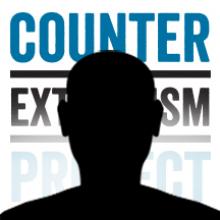
Haqqani network governor of Pakita province, Afghanistan
Acting minister for refugees for the Taliban government (deceased)
The Haqqani network has employed violence since its founding. Haqqani fighters first acquired battlefield experience during the Soviet occupation in the 1980s. Members later honed their capabilities in the realm of terrorism through deep cooperation with al-Qaeda and the Taliban, especially after 2001.Don Rassler and Vahid Brown, “The Haqqani Network and al-Qaeda,” Foreign Policy, July 19, 2011, http://foreignpolicy.com/2011/07/19/the-haqqani-network-and-al-qaeda/. For a period, the Haqqani network was regarded by both the U.S. and Afghan governments as the most dangerous outfit operating in Afghanistan and Pakistan. By 2011, Haqqani operations accounted for 10 percent of attacks on coalition forces and about 15% of casualties.Lisa Curtis, “Combatting the Haqqani Terrorist Network,” Heritage Foundation, September 13, 2012, http://www.heritage.org/research/testimony/2012/09/combating-the-haqqani-terrorist-network. Since 2011, the group has sustained heavy casualties from the Pakistani military as well as from U.S. drone strikes, but it remains a formidable fighting force in the region.
The Haqqani network has executed a number of violent attacks, including:
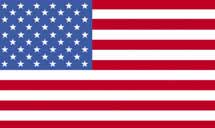
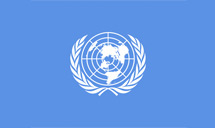
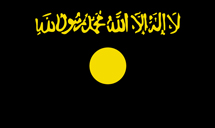
The Haqqani network maintains extensive links to al-Qaeda in both Afghanistan and Pakistan. U.S. intelligence findings indicate that the network has supplied vital assistance to al-Qaeda in the realm of training, propaganda support and networking channels.Jason Ukman, “The Haqqani Network: al Qaeda’s Dangerous Patron,” Washington Post, July 11, 2008, http://www.washingtonpost.com/blogs/checkpoint-washington/post/al-qaedas-dangerous-haqqani-patron-in-pakistan/2011/07/18/gIQAtWmcLI_blog.html. This record has solidified a robust collaborative relationship between the Haqqani network and core al-Qaeda.Jason Ukman, “The Haqqani Network: al Qaeda’s Dangerous Patron,” Washington Post, July 11, 2008, http://www.washingtonpost.com/blogs/checkpoint-washington/post/al-qaedas-dangerous-haqqani-patron-in-pakistan/2011/07/18/gIQAtWmcLI_blog.html. After the 2001 U.S. invasion of Afghanistan, the Haqqanis used the Manba Ulom madrassa in North Waziristan, Pakistan, as a training center and meeting site for al-Qaeda.Bill Roggio, “Haqqani’s main madrassa hit in North Waziristan attack,” Long War Journal, September 9, 2008, https://www.longwarjournal.org/archives/2008/09/haqqanis_main_madras.php. A June 2021 U.N. report concluded the Haqqani Network is the “primary component” in relations between al-Qaeda and the Taliban.“Letter dated 20 May 2021 from the Chair of the Security Council Committee established pursuant to resolution 1988 (2011) addressed to the President of the Security Council,” U.N. Security Council, June 1, 2021, 3, https://www.undocs.org/pdf?symbol=en/S/2021/486.
On July 31, 2022, a CIA drone strike killed al-Qaeda leader Ayman al-Zawahiri in Kabul’s Sherpoor area. According to U.S. President Joe Biden, Zawahiri had been staying in the house that had been targeted. The house reportedly belonged to a top aide to Sirajuddin Haqqani.Matthew Lee, Nomaan Merchant, Mike Balsamo, and James Laporta, “Biden: Drone strike on al-Qaida leader delivered ‘justice,’” Associated Press, August 1, 2022, https://apnews.com/article/ayman-al-zawahri-al-qaida-terrorism-biden-36e5f10256c9bc9972b252849eda91f2. According to a senior Biden official, the residence was a safe house operated by the Haqqani network and senior Haqqani network figures were aware of Zawahiri’s presence in Kabul. After the strike, Haqqani network members worked to conceal Zawahiri’s former presence at the house and moved Zawahiri’s wife, his daughter, and her children to another location.“Background Press Call by a Senior Administration Official on a U.S. Counterterrorism Operation,” White House, August 1, 2022, https://www.whitehouse.gov/briefing-room/press-briefings/2022/08/01/background-press-call-by-a-senior-administration-official-on-a-u-s-counterterrorism-operation/. Taliban spokesman Zabihullah Mujahid condemned the strike as a violation of “international principles.”Idrees Ali, “Al Qaeda leader Zawahiri killed in CIA drone strike in Afghanistan - U.S. officials,” Reuters, August 1, 2022, https://www.reuters.com/world/cia-carried-out-drone-strike-afghanistan-us-officials-say-2022-08-01/.
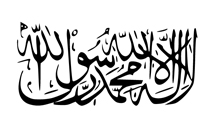
The Haqqani network is considered an integral part of the Afghan Taliban, but it operates independently from the core organization.Eric Schmitt, “Taliban Fighters Appear Blunted in Afghanistan,” New York Times, December 26, 2010, http://www.nytimes.com/2010/12/27/world/asia/27policy.html?_r=0. Drawing on its own fundraising network, it is financially independent from the Taliban. Despite its largely autonomous status, the Haqqanis continue to advance the objectives of a resurgent Taliban. In May 2014, the Haqqanis orchestrated the release of five Taliban commanders held at Guantanamo Bay in exchange for the U.S. serviceman, Bowe Berghdal.Bill Roggio, “US posts rewards for 5 Haqqani Network leaders,” Long War Journal, August 21, 2014, http://www.longwarjournal.org/archives/2014/08/us_posts_rewards_for.php. They also pledge allegiance to the Taliban.Jeffrey Dressler, “Terror is Their Family Business,” Weekly Standard, July 16, 2012, http://www.weeklystandard.com/articles/terror-their-family-business_648234.html.
On September 7, 2021, a month after the Taliban seized control of Afghanistan, the Taliban announced the official appointments within their caretaker government. Sirajuddin Haqqani was named acting minister of the interior. Haqqani’s role provides him with extensive authority over policing and legal matters in Afghanistan.Matthieu Aikins and Jim Huylebroek, “Taliban Appoint Stalwarts to Top Government Posts,” New York Times, September 7, 2021, https://www.nytimes.com/2021/09/07/world/asia/taliban-women-protest-kabul-afghanistan.html; Kathy Gannon, “Taliban form all-male Afghan government of old guard members,” Associated Press, September 8, 2021, https://apnews.com/article/middle-east-pakistan-afghanistan-arrests-islamabad-d50b1b490d27d32eb20cc11b77c12c87.
The Haqqani network has had extensive ties with Pakistan’s ISI dating back to the 1980s.Jason Ukman, “The Haqqani Network: al Qaeda’s Dangerous Patron,” Washington Post, July 11, 2008, http://www.washingtonpost.com/blogs/checkpoint-washington/post/al-qaedas-dangerous-haqqani-patron-in-pakistan/2011/07/18/gIQAtWmcLI_blog.html. According to the Council on Foreign Relations, the Haqqani network has been critical in building and maintaining this insurgency infrastructure on both sides of the Afghan-Pakistani border. It operates as a conduit between the Afghan Taliban and Pakistani intelligence, along with al-Qaeda, and other insurgent groups.“The Taliban,” Council on Foreign Relations, accessed April 13, 2015, http://www.cfr.org/terrorist-organizations-and-networks/taliban/p35985?cid=marketing_use-taliban_infoguide-012115#!/. In 2011, Admiral Mike Mullen, then-chairman of the Joint Chiefs of Staff, called the Haqqanis a “veritable arm” of the ISI.“Blacklisted,” Economist, September 15, 2012, http://www.economist.com/node/21562974.
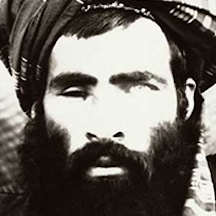
The Haqqanis had long pledged allegiance to Mullah Omar and recognized the Taliban leader as amir al-momineen (the commander or leader of the faithful).Jeffrey Dressler, “Terror is Their Family Business,” Weekly Standard, July 16, 2012, http://www.weeklystandard.com/articles/terror-their-family-business_648234.html.
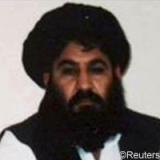
After the announcement of Mullah Omar’s death, members of the Haqqani network recognized his successor, Mullah Akhtar Mansour, as their leader.Mo Ahmed, “Haqqani pledges allegiance to new Afghan Taliban head, urges others to follow,” Press Examiner, August 9, 2015, http://www.pressexaminer.com/haqqani-pledges-allegiance-to-new-afghan-taliban-head-urges-others-to-follow/28611.
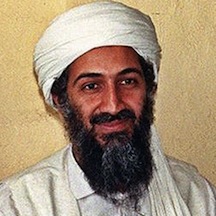
The Haqqanis praise al-Qaeda and have shared training personnel with the terrorist organization. Al-Qaeda’s legendary al-Farouq training camp was even located at the Haqqani base at Zawara, Afghanistan.Abdel Bari Atwan, After Bin Laden, (The New Press: 2012), 135
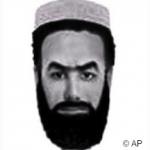


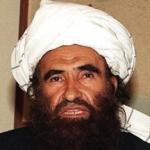
Get the latest news on extremism and counter-extremism delivered to your inbox.